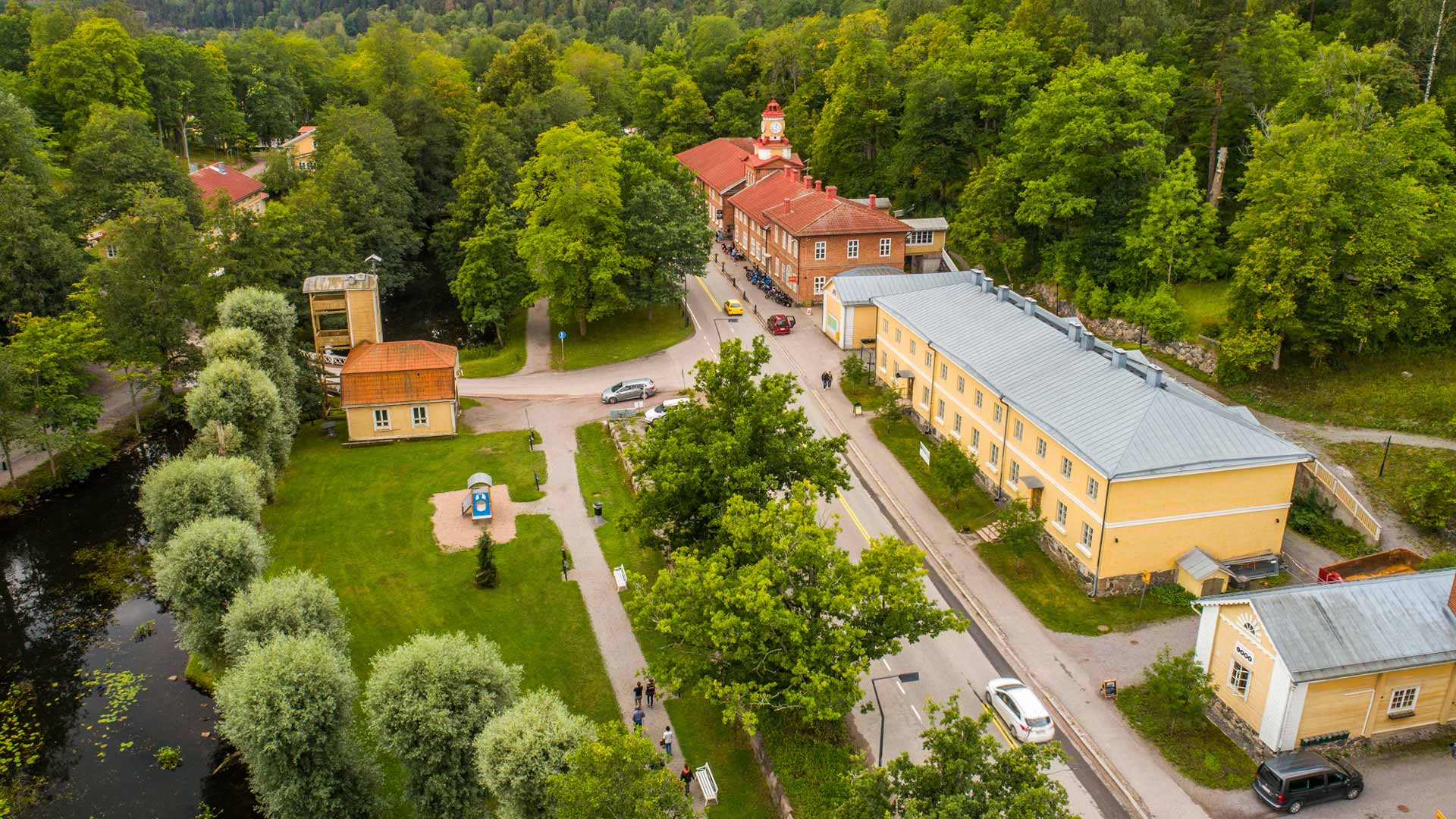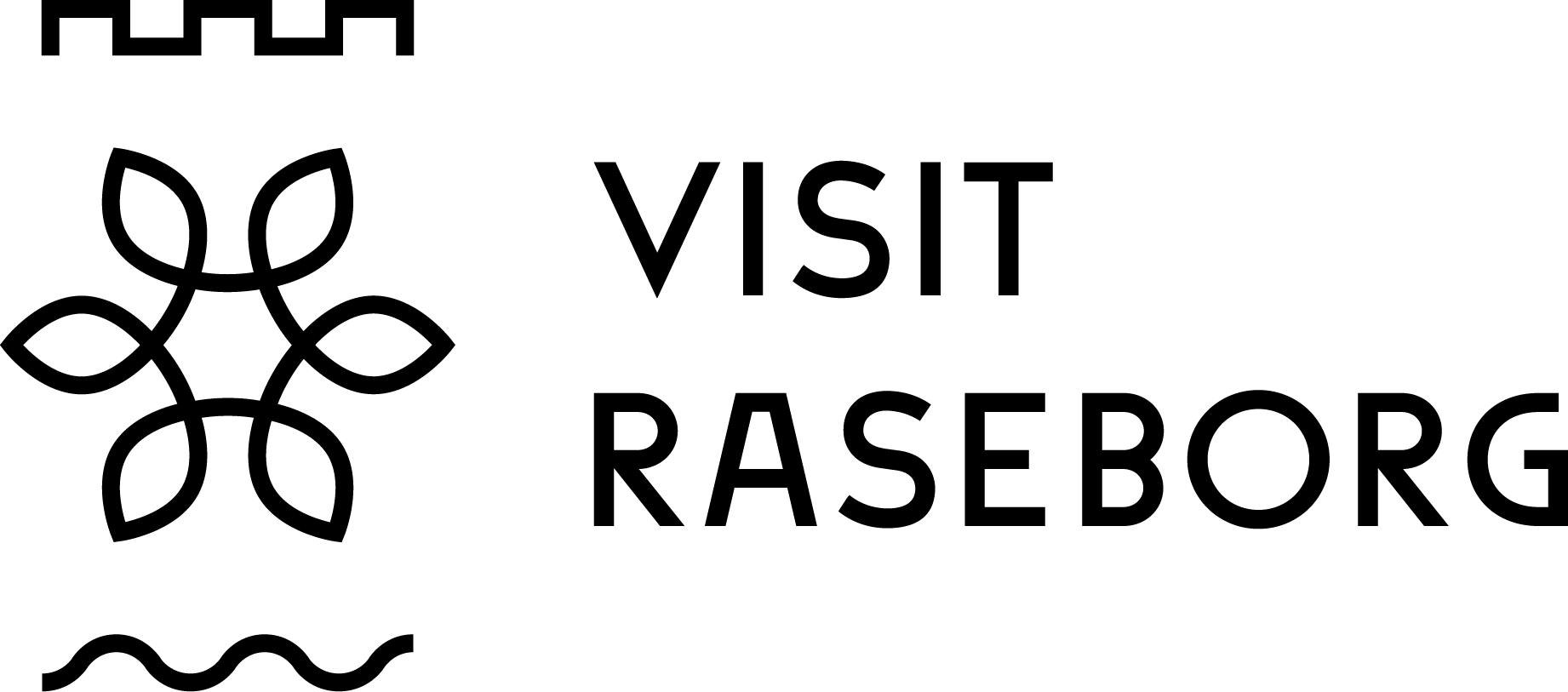Fiskars Village
Fiskars Village, founded in the 17th century, is known today as the centre of Finnish art and design. High quality restaurants, conference and hotel facilities, as well as various workshops, events and shops offer the visitors plenty to see and do throughout the year.
Upon arrival, the visitors first bypass old wooden house; the Assembly Hall and then the hotel and restaurant Fiskars Wärdshus, after which the village road opens up. The buildings connected to the production of iron are lined up along the road: the Granary, The Old Mill, Copper Smithy, the Torby, and the Glass Studio.
The Clock Tower Building with its original Finnish-made Könni no. 9 clock reaches the highest on the village road and has marked the time at Fiskars since 1842. Cafés and shops can be found next to the Clock Tower. There are workshops also on the workshop square and at the end of Åkerraden road, which is a road lined with red houses.

The Tourist Information in Fiskars Village is in summer open Tue-Sun 10:00-17:00, address: Peltorivi 6, Market square.
We also serve you by phone and email every day: +358 (0) 20 439 2099 and fiskarsvillage@fiskars.com
In the autumn, from 1.9. Tue-Sun 11am-5pm. Address: Kasarmi 1852 building, Fiskarsintie 360, 10470 Fiskari. fiskarsvillage.fi
Phone +358 (0) 20 439 2099 and fiskarsvillage@fiskars.com; Mon-Fri 10 am to 4pm.
Most of Fiskars’ boutiques and services are open daily during the summer period. In the fall; Wednesday-Sunday. See current opening hours: Boutiques and services
The beginning of the oldest company in Finland
Fiskars Ironworks was founded in 1649, when Peter Thorwöste, a Dutch businessman, was granted a privilege to build a blast furnace and a trip hammer along the Fiskars River. The natural water power could be harnessed and made it possible for the village to develop. Before long workshops and other shops were founded in the ironworks. Today, the workshops have been refurbished into various artists’ ateliers and studios. Some of the pig iron was used to make nails, wire, knives, hoes, and iron bands to reinforce cartwheels. The ironworks also made cast-iron products, such as pots and frying pans.
Over the years, the ironworks got new owners. During the 18th century Fiskars was under the control of several businessmen, including John Montgomerie, and Robert Finlay and John Jennings. Finlay’s ironworks ended in bankruptcy after 20 years, and the ironworks was taken over by B.M. Björkman of Stockholm. Björkman’s son moved to Fiskars, but he was a young man in his twenties whose liking for the fast life led to the ironworks being sold to Johan (John) Julin in 1822.
The heyday of Fiskars Village
Julin marked the beginning of an important period in the history of the ironworks. While developing the industry at Fiskars, Julin also improved the farming and forestry around the ironworks village. Julin was a progressive man who had Finland’s first fine forging workshop and machine workshop built at Fiskars. Fiskars Village was ahead of its time in both healthcare and education. Various associations offered a lively choice of leisure time activities for the people living in Fiskars Village, ranging from sports to music and the volunteer fire service.
At Julin’s death in 1853, the ironworks was run by a guardianship administration. In 1883, the Fiskars limited liability company was founded. Within the limited company, the ironworks also became part of a bigger whole, which also influenced its later development. Today, Fiskars Corporation is an international company whose consumer products for the home, garden, and outdoors are renowned for their functionality and cutting-edge design. The Group’s core brands are Fiskars, Iittala and Gerber.

